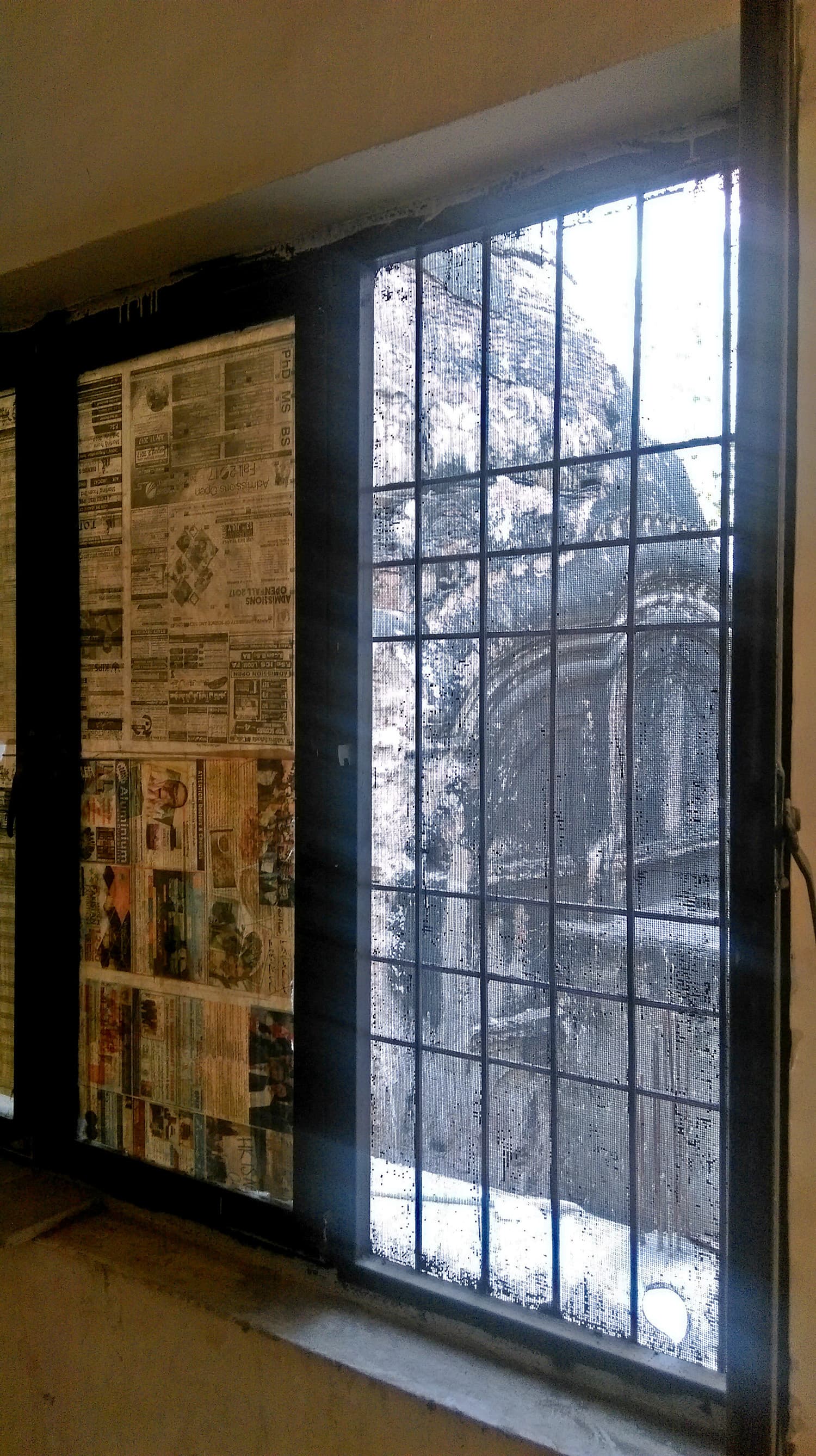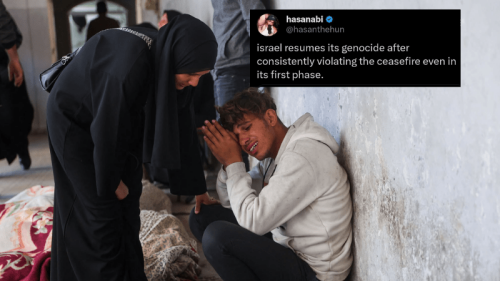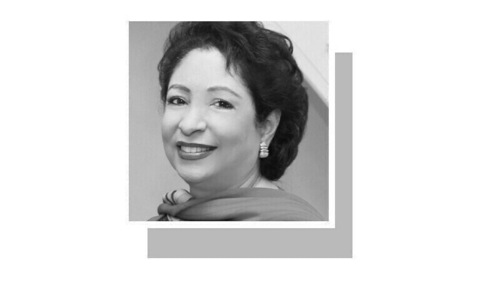Rawalpindi, the abode of the army and the epicentre of the country’s power, is a city that has endured sectarianism and communal violence.
Yet, it has maintained a symbol of peace in the shape of a temple that stands right at the heart of Jamia Taleem ul Quran Raja Bazaar, one of the oldest and central mosques of the city.
Like other cities of its time, Rawalpindi has a qila (fort), a tibbi (red light district), and a mosque around which the city developed.
Descending the street from Purana Qila whose only remains is a desolate brick arch and marble plate, you’ll find yourself amid the buzzing world of Raja Bazaar, the business hub of Rawalpindi.
On the left is the famous Qasai Gali; once a tibbi, it is now a jumble of old and new kitchenware, utensils and steel ware.
Balconies that at one time offered glimpses of stunning Bundo and Khairan Bai (dancers from Kashmir) have turned into storerooms of Chinese goods and crockery.

Searching for Jamia Taleem ul Quran is not without its challenges. Amongst newly built plazas and old buildings decked with bill boards and political banners, it takes considerable effort to locate a green board with bold Urdu writing: “Jamia Masjid Dar ul Uloom Taleem ul Quran”.
This is a mosque that once was at the centre of Tehreek-e-Khatme Nabuwwat, and still follows the Deoband school of thought, taking after the famous Jamia Darul Uloom Haqqania in Akora Khattak, Nowshera.
Climbing the stairs of its newly constructed compound built after a terrorist attack took place on the eve of 15th November, 2013 (Ashura), I was at first overcome with disquiet.
Disquiet soon changed to wonder as I heard the sound of the hymns of students coming from the main hall, lending an air of orchestral grandeur, and growing more perfect with every stair I climbed.
A police constable and two heavily armed private guards were observing each entry with wary eyes. A thorough body scan along with security cameras revealed that fear still hung in the air.


The new complex has been raised from the ground up and unlike an old building adorned with carvings and calligraphy, it has run-of-the-mill tile flooring along with steel and aluminum works.
Beyond the entrance is a huge courtyard, a main hall along with small rooms belonging to various departments.
At first, I couldn’t spot the temple I had heard about. Doubting the information I had been given, I thought of turning back. However, the azan was called and people started coming in.
Following the crowd, I turned for wuzu. “Bhai, ye hissa toota hai, uper jao [Brother, this area is out of order, go upstairs],” a madrassa student said to me as he stared at my western attire.
At the end of a dingy corridor was an alley with a small hallway and staircase leading upstairs.
While turning to the right, I had a splendid view of an open courtyard.

Surrounded by towering buildings, stood a desolate Jain temple, which unlike the neighbouring masjid and huge madrassa, had retained its features and was well-preserved.
Rawalpindi, before Partition, was a predominantly Sikh city with a considerable populace of Hindus and Jains.
Raja Bazaar and the adjacent Bhabra Bazaar were Jain areas, dotted with their temples and magnificent havelis.
The adjacent areas of Mohan Pora, Arjun Nagar and Ram Bagh still echo the past that despite ages having gone by, looms large in their jharokhas (a type of overhanging enclosed balcony).
Knowing my academic background wouldn’t help, I approached the administrator stating my past journalistic affiliation to inquire about the temple.
He agreed to take time from the madrassa principal for the next day at 11am. '


The next day, I decided to take a rickshaw there. “Molana Ghulam Ullah ki masjid jana hai [I want to go to Mollana Ghulam ulla’s Mosque],” I told the rickshaw driver.
The driver, who was in his 20s, understood the exact location without me mentioning the nearby landmark. It took 15 minutes to reach the mosque from Saidpur Road.
The giant Masjid-e-Nabwi-designed door was half opened. I proceeded to climb the stairs; the guards were there as usual. “Molana se milna hai, interview k liye [I want to meet the Molana for the interview],” I explained.
The guard, who seemed aware of my arrival, replied: “Yes, he’s waiting.” He asked me to follow him.
I walked down a long hallway with rooms where students were reciting their lesson. Some looked at me with surprise and others with a smile.
We stopped at a room that had a big plate titled ‘Principal’ displayed outside. “He’s here, ” said the guard peeping in through the door.
“Let him in,” someone replied from inside.
Molana Ashraf Ali, a white-bearded man dressed in white shalwar kameez, is the son of Molana Ghulam Ullah Khan and the current mohtamim (principal) of this mosque.
He met me cordially, greeting me with a mix of English and Urdu and we sat on the carpeted floor.
Within minutes tea arrived along with bakery items. Initially focused on politics, our conversation turned towards sectarianism and later, legal amendment.
Having been told that I wanted to talk about the temple, he looked a little baffled.
“The temple was here before the mosque,” he said while taking a sip of the tea. “My father came here in the 1940’s and established a small mosque. Those were good times. Hindus and Muslims used to live in harmony,” he recalled.
“Although the surrounding population was Hindu, they never bothered us. Then Partition happened and brothers turned into foes.
“Hindus came to my father who had a good reputation because of his honesty and humbleness, and asked him to take care of the temple. They gave him possession of the temple in writing, and asked us to look after it until they returned.
“They never came back but my father kept his promise and passed the caretaking responsibilities to me. For us, this temple is the emblem of our promise and honesty and will endure till future generations.
“We safeguarded it with our lives after the Babri Mosque incident to show the world that followers of Prophet Mohammad — peace be upon him — are not violent.
“We are not like them (Indians) and certainly not the way you media people portray us,” he stated pointedly but with a slight smile.
“We inform our students about other religions and teach them to respect others’ views and live in harmony. Humanity precedes everything,” he affirmed, referring to a hadith.

Madrassa students set eyes on this temple countless times a day on their way from their dormitory to the prayer hall.
To know how they feel, I stopped a 12-year-old student who was passing by, and pointing towards the temple, asked: “What is this?”
“Ye Hindu ka hai [This belongs to Hindus],” came the reply.
The young student, who couldn’t ascertain the difference between a mosque and a temple, saw the Hindu place of worship as part of his mosque.
“Have you ever seen a Hindu?” I asked him in Urdu and he smiled shyly and responded with a “no”.
One of the members of the mosque administration then gave me a tour of the compound. The newly-built complex has two floors reserved for the mosque and madrassa, and the ground floor is a thriving market.


The shops mostly sell prayer beads, rugs and unstitched clothes. This market is the busiest in the city. To my surprise, the first shopkeeper I saw was a man in a yellow turban, speaking a blend of Punjabi and Pashto.
Ranbir Singh is a native of the tribal areas, who fled Peshawar at the time the Taliban took over the neighbouring agencies. “This place is my home,” Ranbir said proudly.
The mosque provided him shelter and he was able to start a business again which is now thriving. “Us zaat ka karam hai [It’s the blessing of God],” he said, pointing to the sky.
“The whole market respects me and calls me bhai jee. After God, I am grateful to this mosque which accepted me without discrimination and gave me respect.”
He told me that Raja Bazaar is a business hub and caters to every business, including music. Syed Shokat Ali runs an old military music band out of a pre-Partition building in front of the mosque.
With old musical instruments displayed on the walls, the band was getting ready for a function. “We came here after Partition,” he informed me, showing me old pictures of his family.
Although we sometimes practice our music here, we respect the mosque, especially the azan.
“The mosque administration and students also respect us and have never interfered in our affairs. Despite my different sect, a code of mutual respect has been established for decades and will endure for many to come,” he said while looking towards the mosque from his wooden balcony.


Living in a country that associates every norm with religion, tolerance and peace are values that appear to be fast diminishing from our society.
The newer generations have grown up with confused identities, and Pakistani society now faces a social vacuum.
Opportunists with their personal vengeance fill this vacuum with hate, as result of which the country is sweltering in the fire of sectarianism.
For a country that has been struggling with identity and ideology since its inception, there’s a growing need to refuse to participate in social, religious and sectarian discrimination and hate.
In a world of increasing tensions, peaceful coexistence among practitioners of various beliefs seems the only way forward if we are to become a better society.
Have you visited any lesser-known heritage sites across Pakistan? Share your experience with us at blog@dawn.com.
















































